
BEAM is berthed to the aft port of Node 3. (Tranquility)
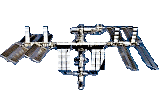

BEAM is berthed to the aft port of Node 3. (Tranquility)

The Bigelow Expandable Activity Module [BEAM] is an experimental space station module developed by Bigelow Aerospace, under contract to NASA. It is berthed to the aft port of the Node 3. (Tranquility).
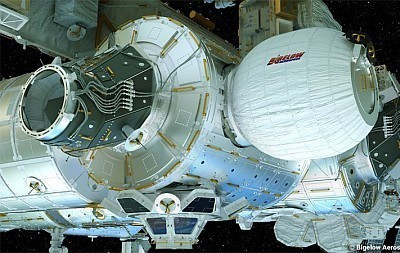
BEAM is designed to be lightweight and compact for transport to the station.
It is then inflated to form a rigid pressurized habitat module. It is being used to test expandable space habitat technology.
Being lightweight and compact at launch, inflatable modules can reduce costs by using smaller cargo craft and launch vehicles.
References: Bigelow Aerospace, Wikipedia
The BEAM is an experimental program in an effort to test and validate expandable habitat technology. If BEAM performs favorably, it could lead to development of expandable habitation structures for future crews travelling in deep space.
The two-year demonstration period will:
1. Demonstrate launch and deployment of a commercial inflatable module, by:
1a. Implement folding and packaging techniques for inflatable shell.
1b. Implement a venting system for inflatable shell during ascent to ISS.
2. Determine radiation protection capability of inflatable structures.
3. Demonstrate design performance of commercial inflatable structures, including, thermal, structural, mechanical durability and long term leak performance.
4. Demonstrate safe deployment and operation of an inflatable structure in a flight mission.
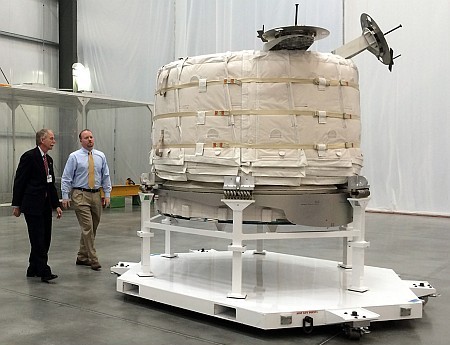
At the end of BEAM's mission, the plan was to remove it from the ISS and burn up during re-entry. On January 18, 2017, however, Bigelow and NASA announced they were discussing the possibility of extending the on-orbit life of BEAM and using it for other purposes.
BEAM is composed of two metal bulkheads, an aluminum structure and multiple layers of soft fabric with spacing between layers. The fabric layers protect internal restraints and a bladder system. It has no windows or internal power.
When BEAM is pressurized (Expanded) its interior pressure is 1 atmosphere, the same as the inside of the station. BEAM's internal dimensions provide sufficient volume for a crew member to enter the module to collect sensor data, perform microbial surface sampling and inspect its general condition. The hatch to the module will otherwise remain closed. The various equipment and sensors are attached to two central supports.
NASA originally considered the idea of inflatable habitats in the 1960s, and developed the TransHab inflatable module concept in the late 1990s. This project was cancelled in 2000, and Bigelow Aerospace purchased the rights to the patents developed by NASA. In 2006 and 2007, Bigelow launched two demonstration modules to Earth orbit, Genesis I and Genesis II.
In early 2010 NASA re-initiated analysis of expandable module technology for a variety of potential missions. In January 2011, Bigelow projected that the BEAM module could be built and made flight-ready 24 months after a build contract was secured.
On December 20, 2012, NASA awarded Bigelow Aerospace a US$17.8 million contract to construct the Bigelow Expandable Activity Module under NASA's Advanced Exploration Systems (AES) Program.
NASA plans made public in mid-2013 called for a 2015 delivery of the module to the ISS. During a press event on March 12, 2015, at the Bigelow Aerospace facility, the completed ISS flight unit, compacted and with two Canadarm2 grapple fixtures attached, was displayed for the media.
The BEAM's flexible Kevlar-like materials used in its construction are proprietary.The multiple layers of flexible fabric and closed-cell vinyl polymer foam in the structural shell are expected to provide impact protection as well as radiation protection. This is to be validated by actual measurements.
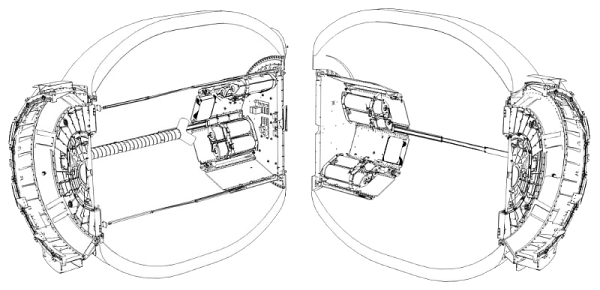
In a 2002 NASA study, it was suggested that materials that have high hydrogen contents, such as polyethylene, can reduce primary and secondary radiation to a greater extent than metals, such as aluminum.
Mass: 1,413.0 kg
Length - Packed: 2.16 m
Length - Pressurized: 4.01 m
Diameter - Packed: 2.36 m
Diameter - Pressurized: 3.23 m
Pressure - Interior: 14.7 psi (1 atm)
Volume - Living: 16.0 m3
In early 2015, BEAM was scheduled for deployment on the next available ISS transport vehicle, SpaceX CRS-8, which was scheduled for launch in September 2015. Its delivery was delayed, however, due to a rocket failure during the SpaceX CRS-7 launch in June 2015.
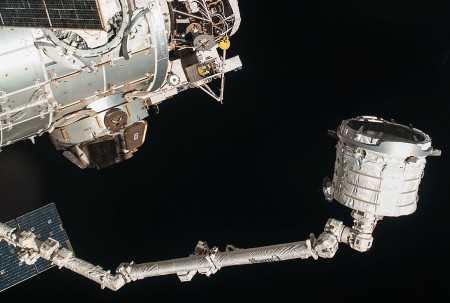
The successful launch of SpaceX CRS-8 took place on April 8, 2016, and the Dragon cargo vehicle was berthed to the nadir port of Node 2. (Harmony) on April 10. In April 16, British astronaut Tim Peake extracted BEAM from Dragon's trunk using the station robot arm (Canadarm2), and installed it on the aft port of Node 3. (Tranquility).
Launch Date: April 8, 2016, 20:43 UTC
Launch Vehicle: Falcon 9 Full Thrust
Delivery Orbital Craft: SpaceX Dragon
Mission (Flight) Number: CRS-8
Berthed to ISS: April 16, 2016, 09:36 UTC
Location on ISS: Node 3. (Tranquility) aft port
Un-berthing from ISS - Planned: 2018
The first attempt at module expansion by inflation took place on May 26, 2016, and was suspended after higher-than-expected air pressure inside BEAM was detected with minimal expansion of the module. The failure to expand and unfold is thought to have been the result of the unanticipated 10-month delay in module inflation, which may have caused the fabric layers to stick together.

The module was successfully expanded on May 28 over the course of seven hours, with air being injected 25 times for a total of 2 minutes 27 seconds. Its length was extended 170 cm from its stowed configuration, 2.5 cm less than expected. After expansion was complete, air tanks aboard BEAM were opened to equalize air pressure in the module with that of the station.
Astronaut Jeff Williams and cosmonaut Oleg Skripochka opened the hatch and entered BEAM on June 6, 2016. They collected an air sample, download expansion data from sensors, and installed monitoring equipment. The hatch to BEAM was re-sealed on June 8 after three days of tests.
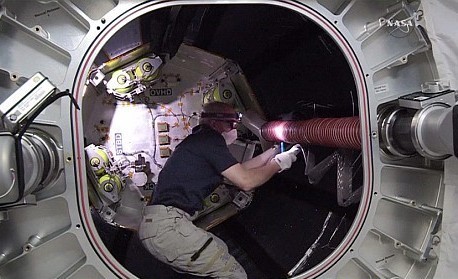
A second round of tests took place on September 29 of that same year when astronaut Kathleen Rubins entered the module to install temporary monitoring equipment.
NASA noted in May 2017 that, after spending a year in space, BEAM instrumentation had recorded "a few probable micrometeoroid debris impacts" but that the module's protective layers had resisted any penetration.
Early results from monitors inside the module have shown that galactic cosmic radiation levels are comparable to those in the rest of the space station. Further testing will try to characterize whether the inflatable structure is any more resilient to radiation than traditional metal modules.